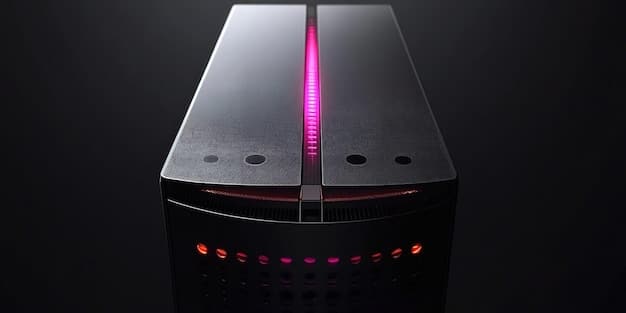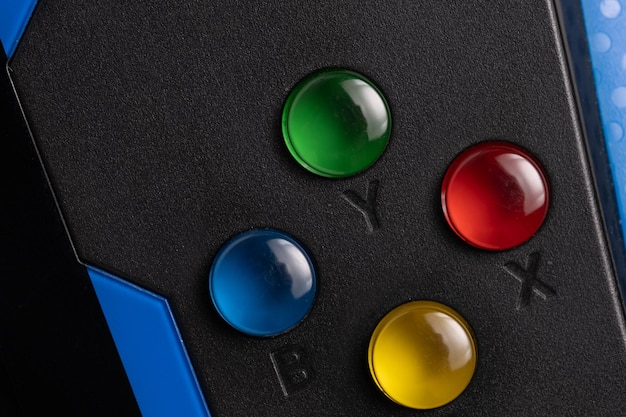Xbox Series X Refresh: Will 2025 Bring a 15% Frame Rate Boost?

Rumors suggest that a mid-generation refresh of the Xbox Series X in 2025 might deliver a 15% increase in frame rates, but several factors could influence whether this performance boost materializes.
Will the new Xbox Series X mid-gen refresh slated for 2025 actually deliver a 15% boost in frame rates? Gamers are buzzing about the possibilities, but let’s dive into the facts and the rumors to see what’s realistic.
The Buzz Around an Xbox Series X Refresh
The potential for a mid-generation refresh of the Xbox Series X has been a hot topic in the gaming community. Such refreshes are not uncommon, aiming to keep consoles competitive by incorporating newer technologies. The speculation around a 15% frame rate boost has definitely captured attention, suggesting a significant leap in performance.
Microsoft has a history of releasing updated versions of their consoles. The Xbox One X provided a substantial performance improvement over the original Xbox One, proving that mid-generation upgrades can be more than just cosmetic. This history adds fuel to the fire, making the rumors of a similar upgrade for the Series X all the more credible.

Past Mid-Gen Console Upgrades
Looking back, we can see how effective mid-generation upgrades can be. The PS4 Pro and Xbox One X both offered enhanced gaming experiences. These upgrades weren’t just about raw power; they also improved image quality and offered more stable frame rates.
- PlayStation 4 Pro: Enhanced resolution and graphics, smoother gameplay.
- Xbox One X: True 4K gaming, improved textures, faster loading times.
- Nintendo Switch (OLED Model): While primarily a display upgrade, it also brought minor performance improvements.
These examples show that mid-generation refreshes can significantly improve the gaming experience, making gamers excited for what Microsoft might have in store.
In conclusion, the anticipation for an Xbox Series X refresh is based on a solid foundation of past performance enhancements. The possibility of a 15% frame rate boost is thrilling, but let’s temper expectations with a look at the factors that could make or break this upgrade.
What Could Drive a 15% Frame Rate Boost?
Achieving a 15% frame rate boost isn’t just about throwing more hardware at the problem. Several factors would need to align to make such an improvement possible. Let’s look at the primary drivers.
One key area for improvement is the console’s APU (Accelerated Processing Unit). A more efficient and powerful APU could handle more complex calculations without overheating, allowing for higher clock speeds and better performance. Another potential upgrade is the memory subsystem, which can significantly impact frame rates, especially in graphically intensive games.
Potential Hardware Upgrades
Several hardware upgrades could contribute to a significant performance boost. These include a more advanced CPU, a more powerful GPU, and faster RAM.
A new CPU architecture could provide better instruction processing, reducing bottlenecks and improving overall system performance. Similarly, a more powerful GPU could handle more complex graphical tasks, resulting in higher frame rates and better visual fidelity.
- Advanced CPU: Better instruction processing for smoother gameplay.
- More Powerful GPU: Enhanced graphical capabilities for higher frame rates.
- Faster RAM: Reduced loading times and smoother rendering.
By focusing on these critical hardware components, Microsoft could potentially deliver the promised 15% frame rate boost.
To summarize, a combination of APU improvements, memory enhancements, and overall hardware upgrades could pave the way for a 15% boost in frame rates. The effectiveness of these upgrades will depend on Microsoft’s ability to optimize the hardware and software in tandem.
The Role of Software Optimization
Hardware is only half the story. Software optimization plays a crucial role in maximizing performance. Even with the most powerful hardware, poorly optimized software can lead to disappointing results.
DirectX optimizations, a key component of Xbox’s software stack, can have a huge impact on performance. Efficient memory management and reduced CPU overhead can lead to substantial frame rate improvements. Game developers also need to optimize their games to take full advantage of the console’s capabilities.

DirectX Optimizations
DirectX is a collection of APIs that allows software, primarily games, to interact with video and audio hardware. Optimizations in DirectX can lead to significant performance gains.
Improved memory management can reduce the amount of RAM needed to run a game, freeing up resources for other tasks. Reduced CPU overhead means the CPU spends less time managing tasks and more time processing game logic.
- Improved Memory Management: Reduces RAM usage for smoother performance.
- Reduced CPU Overhead: Allows the CPU to focus on game logic.
- Better API Calls: Streamlines communication between software and hardware.
By focusing on DirectX optimizations, Microsoft and game developers can squeeze every last drop of performance out of the Xbox Series X refresh.
In conclusion, software optimization is just as crucial as hardware upgrades in achieving a 15% frame rate boost. Improved DirectX performance, efficient memory management, and optimized game code are all essential elements in delivering a smooth and responsive gaming experience.
What Games Would Benefit the Most?
Not all games are created equal. Some games are more demanding than others, and these are the titles that would benefit most from a 15% frame rate boost. Titles with complex graphics and large open worlds stand to gain the most.
Games like Cyberpunk 2077, Assassin’s Creed Valhalla, and Red Dead Redemption 2 are known for pushing the Xbox Series X to its limits. A performance boost could provide a smoother, more consistent frame rate, especially in graphically intense scenes. Online multiplayer games could also benefit, with more stable frame rates leading to a more competitive experience.
Examples of Demanding Games
Certain games are particularly taxing on console hardware due to their advanced graphics, large open worlds, and complex simulations.
Cyberpunk 2077 is notorious for its demanding graphics, particularly with ray tracing enabled. Assassin’s Creed Valhalla features a vast open world with detailed environments and numerous NPCs. Red Dead Redemption 2 is known for its realistic physics and high-resolution textures.
- Cyberpunk 2077: Ray tracing and complex graphics.
- Assassin’s Creed Valhalla: Large open world and detailed environments.
- Red Dead Redemption 2: Realistic physics and high-resolution textures.
These games would greatly benefit from a 15% frame rate boost, providing a more enjoyable and immersive gaming experience.
In summary, graphically intensive games with large open worlds and complex simulations would reap the greatest rewards from a 15% frame rate boost. Gamers playing these titles could expect smoother performance, more stable frame rates, and an overall better gaming experience.
Potential Challenges and Limitations
While the prospect of a 15% frame rate boost is exciting, there are potential challenges and limitations to consider. Achieving such a boost may not be as straightforward as it seems.
One major challenge is thermal management. More powerful hardware generates more heat, and keeping the console cool enough to prevent throttling can be difficult. The cost of new components is another factor. A significant hardware upgrade could increase the price of the console, potentially alienating budget-conscious consumers. Game compatibility is also a consideration. Some older games may not be optimized to take advantage of the new hardware, limiting the benefits of the upgrade.
Thermal Management Issues
Increased power consumption leads to increased heat generation, which can cause thermal throttling and reduce performance.
Advanced cooling solutions, such as liquid cooling or larger heatsinks, can help mitigate thermal issues, but these solutions add to the cost and complexity of the console. Balancing performance and thermal management is a key challenge for Microsoft.
- Increased Heat: More powerful hardware generates more heat.
- Thermal Throttling: Overheating can reduce performance.
- Cooling Solutions: Advanced cooling systems can be costly.
Addressing thermal management issues is essential for delivering a consistent and reliable performance boost.
In conclusion, while a 15% frame rate boost is a tantalizing possibility, Microsoft faces several challenges and limitations in achieving this goal. Thermal management, component costs, and game compatibility are just some of the factors that could affect the viability and success of the upgrade.
What Does This Mean for Console Gaming in 2025?
If Microsoft can successfully deliver a 15% frame rate boost with the Xbox Series X refresh, it would have significant implications for the console gaming landscape in 2025. It could set a new standard for mid-generation upgrades.
A successful refresh could extend the lifespan of the current console generation, providing gamers with a more compelling reason to stick with their existing hardware rather than switch to a new platform. It could also incentivize other console manufacturers to follow suit, leading to faster innovation and more frequent hardware upgrades. Ultimately, this could result in a better gaming experience for everyone.
Setting a New Standard
A significant performance boost could redefine expectations for mid-generation console upgrades.
Gamers may come to expect more substantial improvements with each refresh, pushing console manufacturers to continually innovate and improve their hardware. This could lead to a more dynamic and competitive console market.
- Higher Expectations: Gamers will expect more significant upgrades.
- Faster Innovation: Console manufacturers will innovate more rapidly.
- Competitive Market: A more dynamic and competitive console market.
By raising the bar for mid-generation upgrades, Microsoft could reshape the future of console gaming.
In summary, a successful Xbox Series X refresh with a 15% frame rate boost could revolutionize the console gaming landscape in 2025. It could set a new standard for mid-generation upgrades, incentivize faster innovation, and ultimately provide gamers with a better and more immersive gaming experience.
| Key Point | Brief Description |
|---|---|
| 🚀 Potential 15% Boost | A possible frame rate increase in the Xbox Series X. |
| ⚙️ Hardware Upgrades | New CPU, GPU, and RAM for enhanced performance. |
| 🎮 Game Optimization | Software tweaks to maximize console capabilities. |
| 🌡️ Thermal Challenges | Managing heat from more powerful components is essential. |
FAQ
▼
While not officially confirmed, rumors and historical precedent suggest a refresh is likely. Microsoft has previously released mid-gen upgrades for their consoles.
▼
The cost is unknown, but it will likely be higher than the current Series X due to new components. Microsoft will aim for a competitive price point.
▼
Graphically intensive games with large open worlds, such as Cyberpunk 2077 and Assassin’s Creed Valhalla, will see the biggest improvements.
▼
The rumored release date is in 2025, but Microsoft has not officially announced any dates. Keep an eye on official announcements.
▼
Most likely, yes. Microsoft has a strong track record of backward compatibility, ensuring older games will work on newer hardware.
Conclusion
The prospect of an Xbox Series X mid-generation refresh boosting frame rates by 15% in 2025 is an exciting one. While many factors could influence its success, the potential benefits for console gaming are undeniable. Keep an eye on official announcements from Microsoft for more concrete details.





